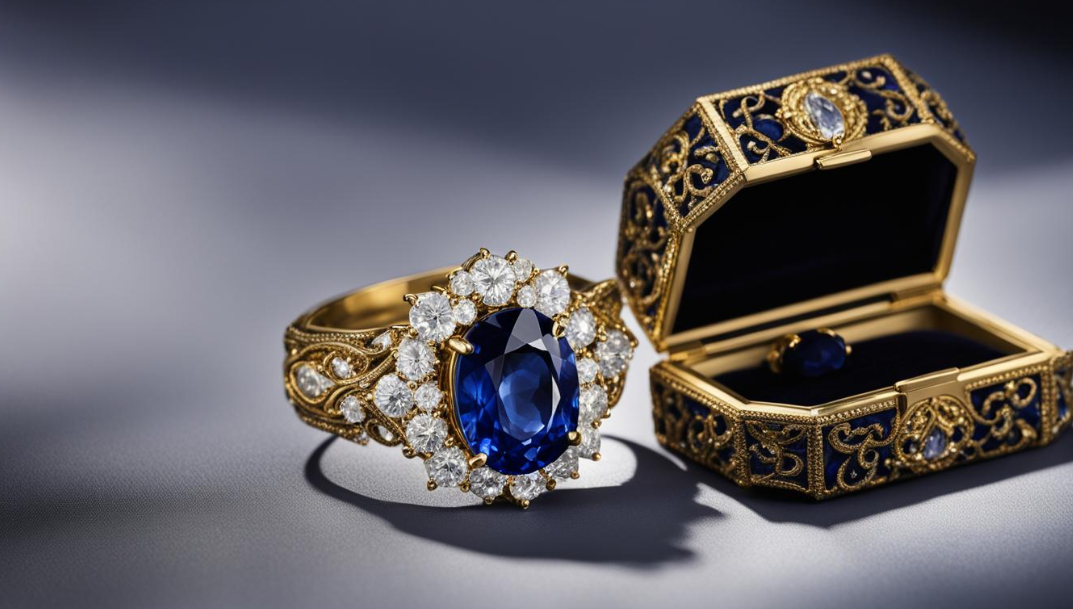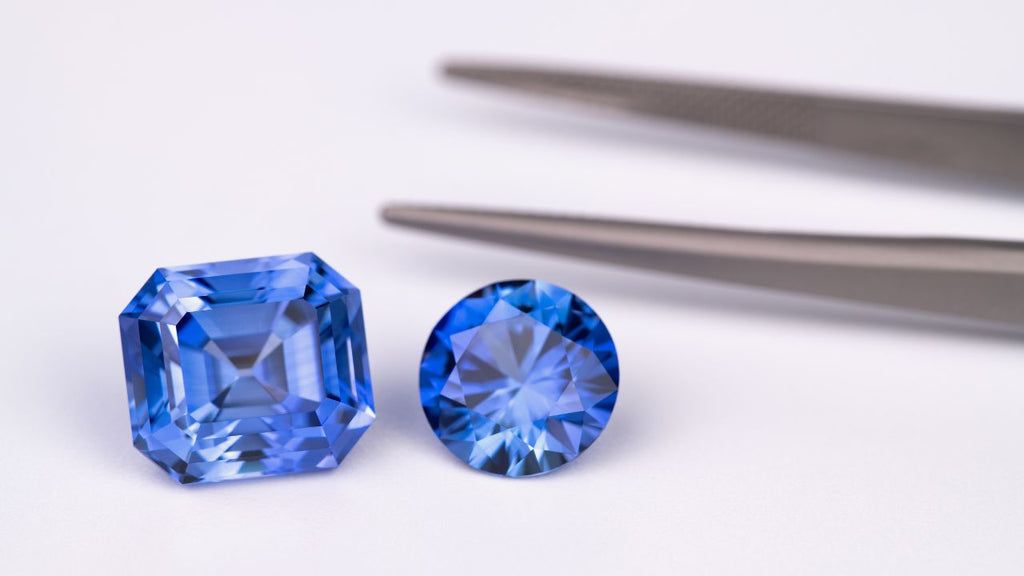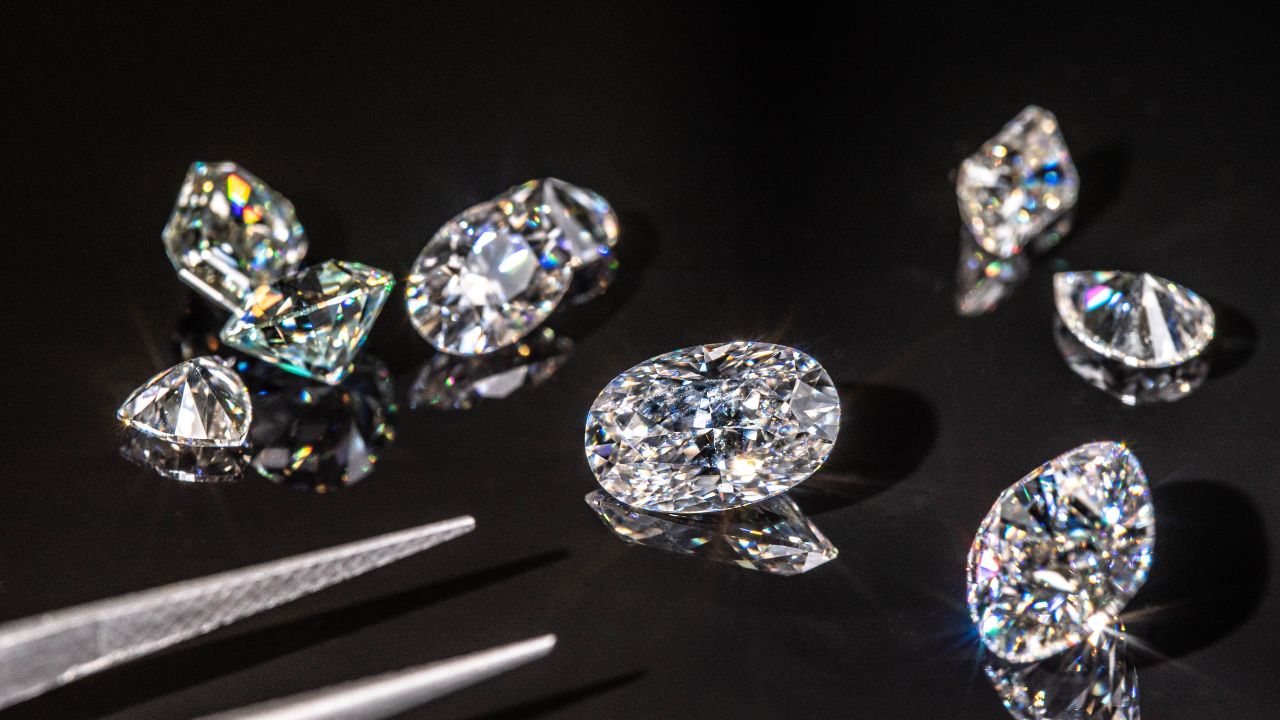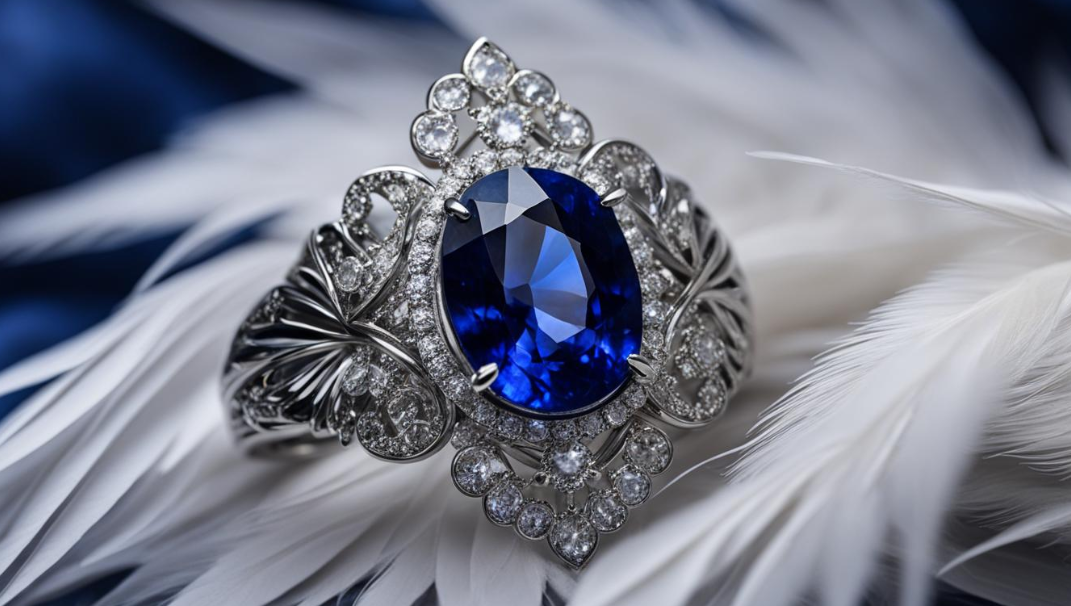
Are Blue Sapphires Valuable?
When it comes to precious gemstones, blue sapphires are undeniably valuable. These stunning blue gems are considered some of the most sought-after and rarest among blue colored gemstones. Their breathtaking beauty, exceptional durability, and remarkable luster make them highly coveted in the market.
So, what determines the value of blue sapphires? Well, several factors come into play. The color of the sapphire is crucial, with vibrant and pure blue shades fetching higher prices. Size also plays a significant role, with larger sapphires commanding more value. The origin of the sapphire, whether it's from Kashmir, Burma, Sri Lanka, or Madagascar, can also influence its worth.
Enhancements, such as heat treatments, can impact the price of blue sapphires. Natural sapphires without any treatments are particularly rare and highly sought after, thus commanding higher prices. On the other hand, synthetic sapphires, which are artificially made, are more affordable and commonly found in fashion jewelry.
When assessing the value of a blue sapphire, factors such as clarity, sparkle, and the presence of inclusions also come into consideration. The market value of blue sapphires can vary depending on supply and demand, as well as other factors influencing the sapphire market. All these elements contribute to determining the worth of these high-value blue gemstones.
When it comes to determining the value of blue sapphires, several factors come into play. The most significant factor is the color of the sapphire. Vibrant and pure blue sapphires are highly sought-after and command higher prices. The size of the sapphire also plays a role, with larger stones generally being more valuable. The origin of the sapphire can also impact its value, as sapphires from certain regions, such as Kashmir, Burma, Sri Lanka, or Madagascar, are considered more desirable.
To provide a clearer understanding of sapphire value, a sapphire grading scale is used. This scale ranges from A grade to AAAA grade, with higher-grade sapphires being more expensive. The color chart for blue sapphires also plays a role in determining value, with different shades of blue and variations in hue impacting the price.

| Factors | Impact on Value |
|---|---|
| Color | Vibrant and pure blue colors are highly valued. |
| Size | Larger sapphires tend to command higher prices. |
| Origin | Sapphires from certain regions are more desirable and valuable. |
| Enhancements | Unheated natural sapphires are typically more valuable. |
| Clarity | Inclusions can impact clarity and affect the value. |
| Cut | Well-cut sapphires are more desirable and valuable. |
The Value of Different Colored Sapphires
Sapphires are known for their stunning blue color, but they actually come in a variety of shades and hues. Each colored sapphire has its own unique value and appeal. Let's explore the value of different colored sapphires and their significance in the jewelry market.
Pink Sapphires
Pink sapphires are highly sought after for their delicate and romantic hue. The value of a pink sapphire depends on its color saturation, with vivid and intense pinks being more valuable. Lighter pinks may be more affordable, making them a popular choice for those seeking a feminine and elegant gemstone.
Purple Sapphires
Purple sapphires have a captivating and regal appeal. The value of a purple sapphire is determined by its color intensity and hue. Deep purples with hints of blue or red are considered the most valuable. These exquisite gemstones are prized for their rarity and can add a touch of luxury to any jewelry piece.
Yellow Sapphires
Yellow sapphires have a sunny and vibrant color that exudes warmth. The value of a yellow sapphire depends on its hue, with intense and vivid yellows being more valuable. Lighter and softer yellows may be more affordable, offering a budget-friendly option for those who want to brighten up their jewelry collection.
Orange Sapphires
Orange sapphires have a fiery and energetic color that makes a bold statement. The value of an orange sapphire is influenced by its hue and intensity. Vivid and saturated oranges are highly prized, while lighter and softer oranges may be more accessible to those looking for a unique and eye-catching gemstone.
Green Sapphires
Green sapphires offer a fresh and earthy appeal. The value of a green sapphire is determined by its hue and saturation. Rich and vibrant greens are considered the most valuable, while lighter and more yellowish greens may be more affordable. Green sapphires can add a touch of nature-inspired beauty to any piece of jewelry.
| Sapphire Color | Value |
|---|---|
| Pink | Dependent on color saturation |
| Purple | Dependent on color intensity and hue |
| Yellow | Dependent on hue and intensity |
| Orange | Dependent on hue and intensity |
| Green | Dependent on hue and saturation |
Kashmir Sapphires: The Velvety Gems of the Himalayas
Kashmir sapphires are renowned for their exceptional beauty and extraordinary rarity. These precious gems, sourced from the majestic region of Kashmir in the Indian Himalayas, possess a velvety appearance that is highly coveted by gem enthusiasts and collectors worldwide. The allure of Kashmir sapphires lies not only in their mesmerizing blue color but also in their limited supply, making them highly valued in the gemstone market.
What sets Kashmir sapphires apart is their unique velvety appearance, which is caused by the presence of fine silk within the stone. This silk scatters light in a way that gives the sapphire an unmatched glow and depth, making it truly exquisite. The combination of the beautiful blue color and the velvety texture makes Kashmir sapphires truly stand out among other sapphires.

The limited supply of Kashmir sapphires further adds to their allure and value. The mines in Kashmir, which were once the primary source of these exceptional gems, were depleted in the early 1900s. As a result, the availability of Kashmir sapphires in the market is extremely limited, making them a rare and highly sought-after gemstone among collectors and connoisseurs. Due to their scarcity and exceptional beauty, Kashmir sapphires often command high prices, with some specimens fetching prices upwards of $50,000 per carat.
| Key Characteristics of Kashmir Sapphires | Value Factors |
|---|---|
| Velvety appearance | Highly sought after by collectors |
| Distinctive blue color | Greater market demand |
| Limited supply | Rarity and exclusivity |
| Exceptional beauty | High intrinsic value |
When determining the value of a sapphire, two important factors to consider are clarity and cut. Clarity refers to the presence of inclusions, which are internal flaws that can affect the overall appearance of the gemstone. Inclusions can include mineral crystals, partially healed breaks, color zoning, and color banding. While some inclusions may be undesirable, others can actually enhance the beauty of a sapphire, such as the presence of silk, which creates a mesmerizing effect in star sapphires. The clarity of a sapphire plays a role in its value, with stones that have fewer inclusions being more highly prized.
The cut of a sapphire is also crucial in determining its value. A well-cut sapphire will exhibit optimal sparkle and brilliance, enhancing its overall beauty. The cut can affect the symmetry, proportions, and facet arrangement of the gemstone, allowing light to reflect and refract in captivating ways. A high-quality cut maximizes the stone's potential and showcases its color and clarity to their fullest extent. In contrast, a poorly cut sapphire may appear dull or lackluster, reducing its value in the market.

| Clarity | Description |
|---|---|
| Flawless | No inclusions visible under 10x magnification |
| Very, Very Slightly Included (VVS1, VVS2) | Minor inclusions difficult to detect under 10x magnification |
| Very Slightly Included (VS1, VS2) | Minor inclusions visible under 10x magnification |
| Slightly Included (SI1, SI2) | Inclusions visible under 10x magnification |
| Included (I1, I2, I3) | Inclusions visible to the naked eye |
When it comes to the cut of a sapphire, there are various shapes and styles to consider. Popular cuts include round, cushion, oval, princess, and emerald cuts, among others. Each cut creates a different aesthetic and can enhance the stone's color and brilliance in unique ways. Round and cushion cuts are timeless and versatile, while oval and princess cuts offer a modern and elegant appeal. Emerald cuts are known for their step-like facets, emphasizing the stone's clarity and color. The choice of cut is a personal preference, and each has its own charm and allure.
Synthetic vs. Natural Sapphire Pricing
When it comes to sapphires, there are two main types to consider: synthetic sapphires and natural sapphires. These two categories differ not only in their origin but also in their value and pricing.
Synthetic sapphires, also known as lab-created sapphires, are artificially produced in a laboratory. They have the same physical and chemical properties as natural sapphires but are less expensive. This makes them a popular choice for those looking for the beauty of sapphires at a more affordable price.
On the other hand, natural sapphires are formed naturally in the earth's crust over thousands of years. They are highly valued for their rarity and unique characteristics. Natural sapphires can be significantly more expensive than their synthetic counterparts due to their limited supply and natural beauty.
Comparing Synthetic and Natural Sapphire Prices
| Category | Price Range |
|---|---|
| Synthetic Sapphires | Generally Less Expensive |
| Natural Sapphires | Varies, Can be Significantly More Expensive |
The price of both synthetic and natural sapphires can vary depending on factors such as color, size, and quality. While synthetic sapphires offer an affordable option, natural sapphires are prized for their rarity and natural beauty.
Sapphire Market Value
When it comes to the market value of sapphires, several factors come into play. The current sapphire market value can vary depending on various elements that influence pricing. These factors include the quality of the sapphire, including its color, clarity, cut, and carat weight. It's important to note that prices can range widely, from as low as $25 per carat to over $11,000 per carat.
The market value of sapphires is also influenced by supply and demand dynamics. Rarity plays a significant role in determining the value of certain sapphires. For example, sapphires from Kashmir, known for their exceptional beauty and limited supply, can command exceedingly high prices. Prices can fluctuate over time as market conditions change.
To give you an idea of the sapphire price range, it's worth noting that the most expensive sapphire ever sold went for an astonishing $135,000 per carat. This record-breaking price demonstrates the extraordinary value that some sapphires can hold. However, it's important to remember that not all sapphires reach such sky-high prices, and there are options available at various price points.

Several factors contribute to the pricing of sapphires. The most significant factor is the quality of the stone, encompassing factors such as color, clarity, cut, and carat weight. Sapphires with intense and vibrant hues, such as vivid blue or rich pink, tend to be more valuable. Higher clarity, meaning fewer inclusions or flaws, can also drive up the price of a sapphire.
The origin of the sapphire can also play a role in its pricing. Sapphires from certain regions, like Kashmir or Burma, are highly sought after for their exceptional quality and rarity. These origins usually command higher prices due to their limited supply.
Finally, market trends and consumer demand can influence sapphire prices. If a particular color or style becomes popular, it can lead to increased demand and potentially impact prices. Additionally, economic factors, such as fluctuations in the overall jewelry market, can also have an effect on sapphire pricing.
Sapphire Jewelry: A Perfect Blend of Practicality and Romantic Appeal
Sapphires hold a special place among jewelry lovers for their timeless beauty and practical durability as a precious gemstone. Whether an engagement ring, necklace, earrings or bracelet, sapphire jewelry adds elegance and sophistication to any look. Coveted for everyday wear, sapphires rate 9 out of 10 on the Mohs hardness scale, nearly as durable as diamonds, able to withstand scratches and maintain their luster over time. Sapphires also carry romantic symbolism of loyalty, trust and faithfulness, making them a fitting and meaningful choice for engagement rings or wedding bands. Found in a spectrum of rich, iconic shades like classic blue, as well as pink, purple, yellow, orange and green, sapphires allow jewelry wearers to select the perfect hue that speaks to their personal style and preferences.
| Type of Jewelry | Features |
|---|---|
| Engagement Rings | Symbolic of love and commitment, sapphire engagement rings add a unique and colorful twist to traditional diamond rings. |
| Necklaces | Sapphire necklaces are versatile and can be worn as statement pieces or layered with other necklaces for a trendy look. |
| Earrings | From studs to drop earrings, sapphire earrings offer a touch of elegance and sophistication to any outfit. |
| Bracelets | Sapphire bracelets add a pop of color to the wrist, perfect for both casual and formal occasions. |
Additionally, sapphires are the birthstone for September, making them an extra meaningful and popular choice for those born in this month. Whether gifted to a loved one or worn as a personal talisman, sapphire jewelry carries an inherent sentimental value that transcends trends and fashion.
With their stunning aesthetics, durability, and romantic symbolism, it's no wonder that sapphire jewelry continues to be a beloved choice for individuals around the world. Whether you're looking to make a statement, celebrate a significant moment, or simply adorn yourself with a touch of elegance, sapphire jewelry offers a unique blend of practicality and romance that is truly enchanting.
The Value of Blue Sapphires: Assessing and Determining Sapphire Worth
Blue sapphires hold significant value in the gemstone market, with their worth determined by various factors. Assessing the value of a blue sapphire involves considering its color, size, origin, enhancements, clarity, and sparkle. The rarity of natural blue sapphires adds to their allure, making them highly sought after by collectors and enthusiasts. Synthetic sapphires, although less expensive, offer an alternative for those looking for the beauty of sapphires at a lower cost.
The color of a blue sapphire influences its value greatly. Vibrant and pure blue sapphires are highly valued, while variations in tone and saturation can affect their worth. Additionally, larger sapphires tend to command higher prices due to their rarity. The origin of a sapphire, such as Kashmir, Burma, Sri Lanka, or Madagascar, also plays a role in determining its value. Natural, untreated sapphires are generally more valuable than those that have undergone enhancements, such as heat treatments.
The clarity and sparkle of a blue sapphire contribute to its overall value as well. Inclusions, or internal flaws, are common in blue sapphires and can affect their clarity. However, certain inclusions, like silk, can enhance a sapphire's appearance, such as in star sapphires that display asterism. A well-cut sapphire, designed to maximize its brilliance and beauty, is also more desirable and valuable.
Factors Affecting Blue Sapphire Value
| Factor | Description |
|---|---|
| Color | The hue, tone, and saturation of the blue sapphire |
| Size | The weight and dimensions of the blue sapphire |
| Origin | The geographic source of the blue sapphire |
| Enhancements | Any treatments or modifications applied to the blue sapphire |
| Clarity | The presence of inclusions or flaws in the blue sapphire |
| Sparkle | The brilliance and light performance of the blue sapphire |
Assessing the value of a blue sapphire requires careful consideration of these factors, as well as market demand and trends. Ultimately, the value of a blue sapphire is subjective and can vary based on individual preferences and the specific characteristics of the gemstone.

Additional Information about Sapphires
Aside from the classic blue, sapphires come in a stunning array of colors. Pink, purple, yellow, orange, green, and even colorless sapphires can be found. One of the most fascinating types is the color change sapphire, which exhibits different hues under varying lighting conditions, adding a touch of enchantment to any piece of jewelry.
If you're looking for something truly unique, fancy sapphire colors are a perfect choice. These sapphires display vibrant and intense shades beyond the traditional blue spectrum. From vivid pinks to rich purples, fancy sapphires offer a world of possibilities when it comes to adding a pop of color to your jewelry collection.
For those who appreciate natural phenomena, star sapphires are a captivating choice. These gems have inclusions that create a remarkable asterism effect. When viewed under a single light source, they exhibit a mesmerizing star pattern that adds an extra touch of magic to these already beautiful gemstones.
Sapphires can be found in various sources around the world, each with its own unique qualities. For example, Kashmir sapphires are known for their velvety appearance and exceptional blue color, while Burmese sapphires often display a rich royal blue hue. Sri Lankan sapphires are prized for their vibrant colors, while Madagascar sapphires offer a wide range of colors and tones. Each source has something special to offer, and exploring the different origins of sapphires can be an exciting journey.
FAQ
Are blue sapphires valuable?
Yes, blue sapphires are highly valued and considered one of the most valuable and rarest blue colored gemstones.
What determines the value of blue sapphires?
The value of a blue sapphire is determined by factors such as color, size, origin, enhancements, clarity, and sparkle.
What is the value of different colored sapphires?
The value of different colored sapphires varies, with the most valuable being velvety blue to violetish blue sapphires, followed by padparadscha sapphires (pink and orange), pink sapphires, purple sapphires, yellow sapphires, orange sapphires, and green sapphires.
What is the rarity and value of Kashmir sapphires?
Kashmir sapphires are highly valued for their unique beauty and distinctive blue color. They have a limited supply and are considered the rarest and most valuable sapphires in the world.
How does clarity and cut affect the value of sapphires?
Clarity and cut play a role in determining the value of sapphires. Blue sapphires typically have some inclusions, and the presence of inclusions can affect the value. The cut of a sapphire also contributes to its overall value.
What is the difference in pricing between synthetic and natural sapphires?
Synthetic sapphires, which are artificially produced, are generally less expensive than natural sapphires. Natural sapphires are highly valued for their rarity and unique characteristics and can be significantly more expensive.
How is the market value of sapphires determined?
The market value of sapphires can vary depending on factors such as supply and demand, rarity of certain colors or origins, and other factors. Prices can range from as low as $25 per carat to over $11,000 per carat.
Why is sapphire jewelry highly sought after?
Sapphire jewelry is highly sought after for its beauty, durability, and romantic appeal. Sapphires are commonly used in engagement rings, earrings, necklaces, and bracelets.
What additional information is there about sapphires?
Sapphires come in a wide range of colors, including blue, pink, purple, yellow, orange, green, and colorless. There are also color change sapphires, star sapphires, and different sources of sapphires with unique characteristics.


